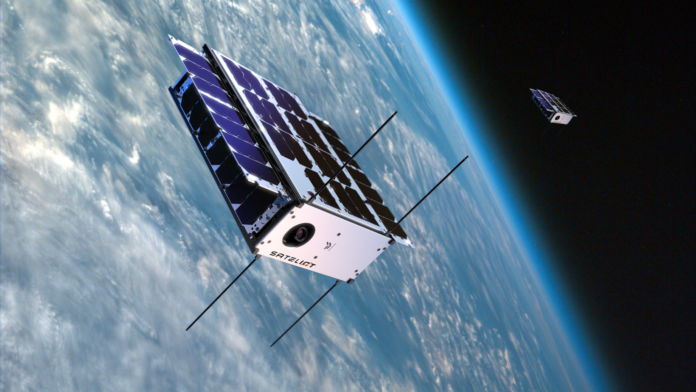Barcelona-based satellite IoT provider Sateliot, building an NB-IoT satellite system based on Release 17 specs in the 5G NR cellular standard, has announced a deal with freight software and analytics company t42 to deploy “thousands of 5G-IoT sensors” in shipping containers for “more than 50 logistics partners across over 50 countries”. So says a press statement, which also suggests the shipping industry could save “up to $47 billion annually” by connecting unconnected containers on the high seas.
UK-based t42 provides IoT tracking and monitoring solutions for the global container and freight market, as well as to electric vehicles. It appointed UK IoT MVNO Eseye earlier this year to supply global roaming and multi-IMSI eSIM services for its global container tracking solutions. The deal was an extension of an existing partnership, which had already seen t42 deploy 2,500 IoT tracking devices with Eseye’s cellular IoT connectivity over a period of 12 months. It has a headline supply contract with electric motorbike maker Zero Motorcycles. It is also working with Transatel.
The contract with Sateliot is geared to provide connectivity at sea, away from terrestrial IoT coverage. Sateliot, expanding a low-earth orbit (LEO) constellation of NB-IoT satellites, has a virtualized cloud-native 5G core for its NB-IoT satellite service, courtesy of a deal with AWS, signed towards the back-end of 2022. It wants to wholesale satellite NB-IoT as a roaming extension for terrestrial operators. Telefonica has been trialling the service. It said in February it is working with Swedish power grid firm Sentrisense to use satellite IoT service for electric grid sensors.
There is a captive market for satellite IoT connectivity in the shipping industry, said t42. “Ninety-nine percent” of maritime transport containers are not tracked or inspected because the world’s oceans are mostly a (point-to-cloud) connectivity-free zone. This results in “losses from cargo theft, tampering, accidents, damages”, it said. Shipping companies, handling 80 percent of international trade, are investing to make 25 percent of their containers smart by 2025. The Sateliot service allows operators to roam onto satellite NB-IoT without changing existing IoT hardware.
A statement said: “Connecting to… satellites [eliminates] the problem of lack of coverage on the high seas. This ensures secure control of merchandise at all times, as these sensors monitor location, acceleration, temperature, humidity, impacts, tilt, light conditions, and container damage, among other parameters – providing intelligent detection of these variables anytime, anywhere… Sateliot allows extending 5G NB-IoT connectivity to any part of the world without terrestrial coverage, without operators having to change their hardware, and at a low cost.”
The press statement went on: “[This] will unleash a revolution in a sector that has mostly stayed the same since the shipping container [was invented] in 1956 – [as a] standardized way to ship goods in a… container [designed] to fit all ships, tools, and ports. Now, a second revolution comes with 5G for IoT… capable of connecting devices to satellite and cellular… The container will undergo a transformation similar to what the automobile experienced, evolving from a simple machine… to a powerful IT tool with many applications.”
Jaume Sanpera, chief executive at Sateliot, commented: “Our collaboration marks a pivotal moment in the industry’s history, transforming traditional shipping containers into intelligent, connected assets. Tracking in open seas – until now, a very luxurious satellite service – will be democratized for all.”
Avi Hartmann, chief executive at t42, said: “It is unbelievable what a small hardware investment can represent for the industry’s performance overall. This change has come to stay; there’s no doubt about it.”

